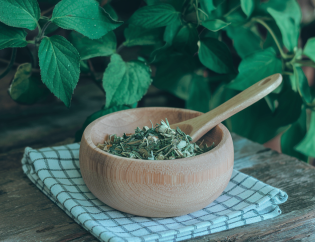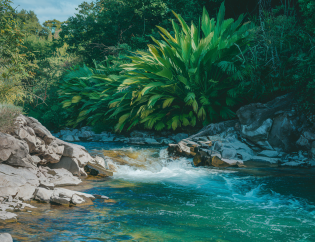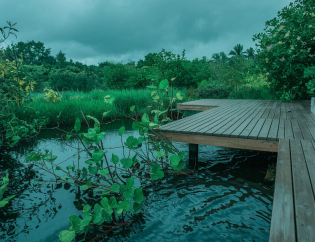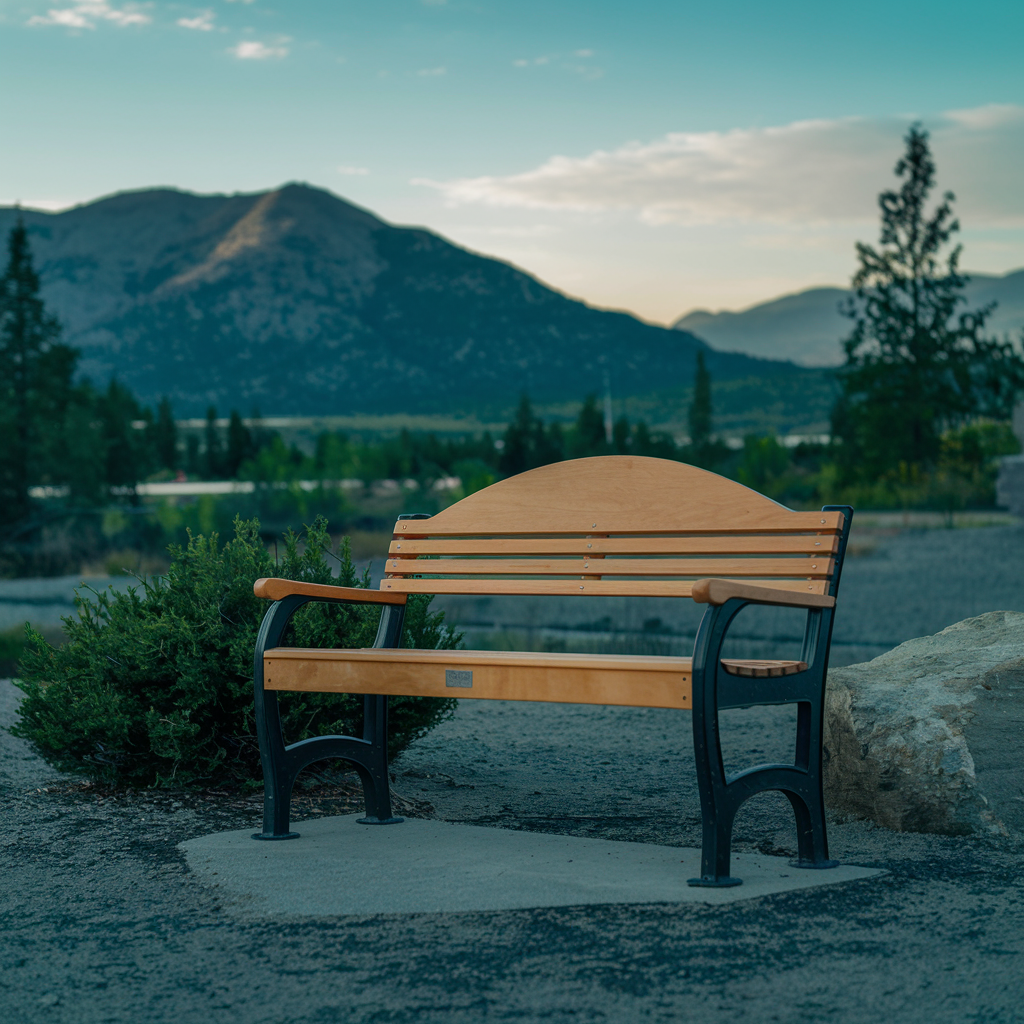
Looking for a sustainable solution for your garden while providing a personal touch? Avoiding harmful fertilizers and pesticides will do wonders by selecting native plants alongside providing local wildlife with food and shelter, allowing your garden to thrive. Ensuring the balance of your garden shouldn’t be hard, consider drip irrigation to help with conserving water or rainwater harvesting, all while minimizing wastage. If needed, kitchen scraps could even be composted to enhance soil quality. There are many unlimited options from using recycled materials to constructing and preserving wildlife habitats. What do you think of doing to convert your garden into a sustainable solution?
Choose Native Plants
Give a new look to your outdoor space while using minimum resources with native plants, an eco-friendly option when landscaping. Such plants would be able to adapt to the local weather and soil meaning they won’t heavily rely on fertilizers and need additional maintenance.
By selecting native species, you’re also supporting local wildlife, providing food and habitat for birds, butterflies, and other pollinators.
First, figure out what plants are indigenous to your region. Talk with gardening professionals or browse your local nurseries and discover the most suitable plants for your garden. There is no shortage of native plants that produce lovely flowers, appealing textural features and vibrant hues.
Malicious vegetation like invasive plants can be controlled by native species planting which also helps preserve the local plants and wildlife. Invasive plants tend to have a narrow focus by overshadowing local plants which can lead to a disruption in the ecosystem.
As for landscaping you might want to allocate shrubs, trees, and flowering plants to make it visually appealing while maintaining variety.
Implement Water Conservation
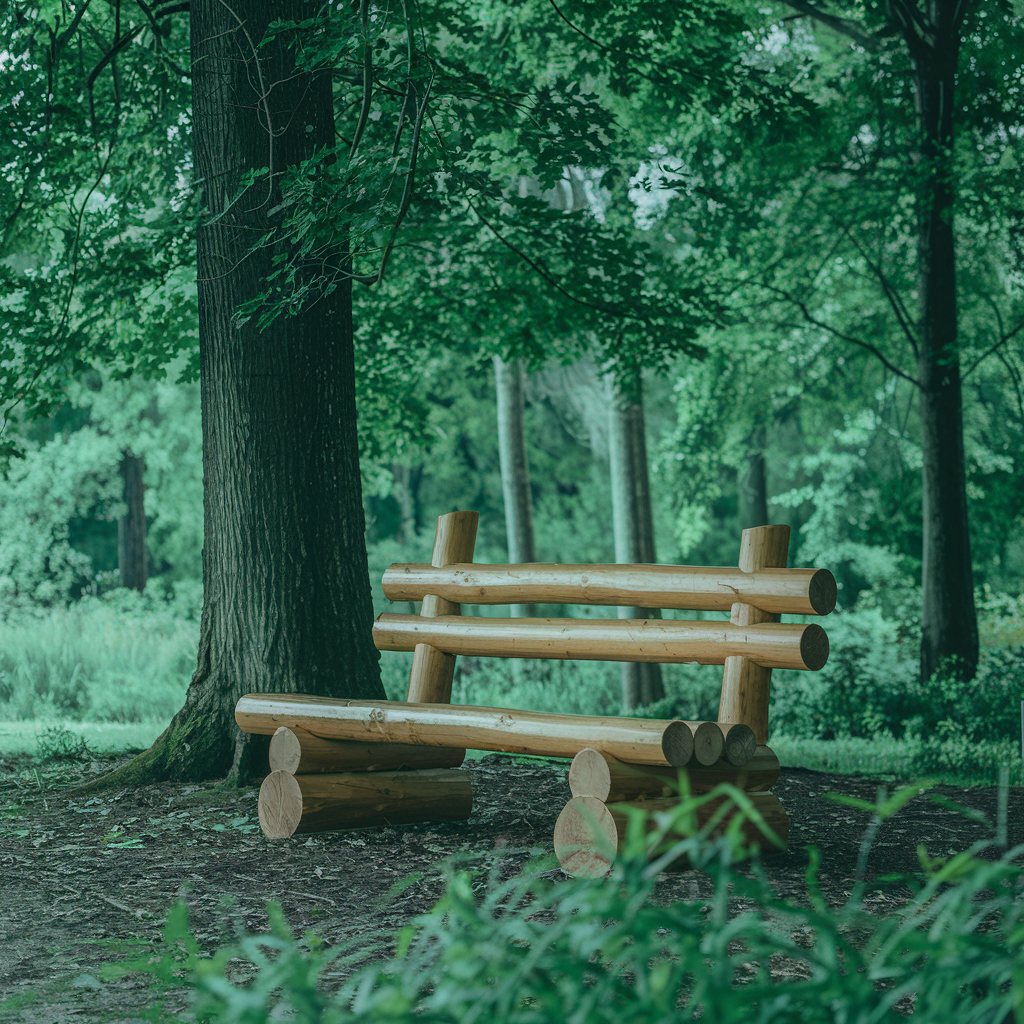
Integrate water saving techniques in order to be able to develop a sustainable landscape. First, you want to look into getting a rainwater harvesting system. This type of system captures rain that drips off your rooftop and stores it for later use when watering your garden. This is an excellent strategy for decreasing your water prices while also improving the use of natural resources.
Then, look for a better alternative to just traditional sprinklers, we suggest using a drip irrigation system. This method enables plants to be watered by supplying moisture to their roots, limiting evaporation and ensuring that the plant gets the amount of moisture needed. Compared to overhead watering methods, We have experienced drip systems to save an incredible amount of water.
Add mulch to your flower or vegetable garden. Mulch assists soil texture in keeping moisture which decreases the times you need to water your plants. Additionally, it restricts the growth of weeds which tend to absorb out all the water. Always go for organic mulches like straw or wood chips for better results when it comes to your garden.
Modify your watering time to either early mornings or late evenings. When you water your plants in cooler weather, there is less evaporation which can aid in ensuring more water gets to your plant.
Lastly, check the temperature and do not water the plants if it rained so you do not overwater them.
Make Use Of Composting Techniques
It is obvious that water conservation is important for a sustainable landscape, but ensuring that your soil has enough nutrients is also crucial. Composting techniques is one great way to achieve that. Composting is the ability to turn scraps from the kitchen and waste from the garden into a nutritious form of natural fertilizer. This not only helps in reducing waste in landfills but also provides a healthy addition to your garden.
To start off with composting, select a location in the backyard where you can create a compost pile or bin. Use a combination of green and brown materials, e.g.: green could be grass clippings and fruit peels while brown could be twigs and dry leaves. The reason for the mixture is that each form contains different properties and aids in the decomposition process.
Regularly rotating the compost will allow it to have more air, as well as allow it to degrade faster. When your compost has a dark color, is crumbly and smells like soil, then it is ready to be used. Spread compost around your plants and it will enhance the nutrition of the soil as well as its structure.
Choose Organic Fertilizers
Most of the times, if you go for organic fertilizers, the health of your garden will be significantly improved and it is good for sustainable practices. Organic fertilizers are derived from natural sources such as compost manure, bone meal and plant residues. They provide a lot of benefits that the use of synthetic fertilizers cannot provide.
When you switch to organic, it will not only feed the plants, but it becomes beneficial for the soil, helps with the expansion of the ecosystem and limits the amount of chemical run-off.
The following are the ways organic fertilizers will benefit your garden:
- Nourishes the soil: Soil becomes better structured and able to hold more water and allow more microbial activity, all of which promote better growth in the plants.
- Nutrients are gradually released: Organic fertilizers release nutrients all at once unlike synthetic ones which over-fertilize and have to slowly let out nutrients but at critial times
- Improve the condition of the plants: The natural materials in these fertilizers help strengthen the plants’ root system and make them healthier by saving them from diseases and pests.
- The Causes for Environmental Change: By utilizing less chemical fertilizers, pollution is reduced which in turn helps protect rivers and large bodies of water.
Wildlife Nature Enhancements
Consider adding some natural features to welcome the wildlife in your gardens such as native flowers, shrubs, or trees that will aid native animals with shelter and food sources. Adapting and adopting plants to the environment will raise your chances of attracting birds, butterflies and other beneficial insects which will increase biodiversity while reducing the chances of using chemical pesticides.
Animals also require some water sources to drink, breed, and bathe so be sure to add a water feature like a small pond or bird bath to ensure their presence in your garden. You may also add some bat boxes and birdhouses specially designed for nesting to the area as well.
Make sure to leave parts of your garden untouched so small mammals, insects and amphibians can create their habitats to stay and breed as well.
Try to avoid using any chemical pesticides as they will harm the wildlife you are trying to attract and counter the problem by bringing in predatory insects such as lacewings and ladybugs instead.
Reduce the Lawn Space
While tending a lawn may appear to be a good idea, it would be wise to think about reducing the space devoted to a lawn in order to achieve more sustainable landscaping. Areas devoted to lawns use a lot of water, chemicals, and other things that are harmful to the environment, and thus are not sustainable. If the area devoted to the lawn is minimized, you can conserve resources and have a more interesting garden.
Here’s what you can do:
- Define Areas with a Purpose: Some portions of the lawn can be turned into workable areas, such as vegetable gardens or flower beds. They are not only aesthetically pleasing but also promote a hygge way of life in the house as you grow your own food, and require minimal water with limited maintenance.
- Use Indigenous Vegetation: Cut portions of the lawn and plant native vegetation instead. Such vegetation can thrive under the local environment, requires lesser water intake, and promotes wildlife around the garden.
- Build Walkways: Pathways made out of gravel, stone, or permeable pavers would be effective in reducing lawn size. These also aid in drainage and prevention of excess water runoff which would help in stopping soil erosion.
- Cover the Ground: Replace the grass with ground covers including clover or thyme which would need to be maintained on a low level. These plants are ideal in dry weather and provide and aesthetic green appearance without the need to cut the grass regularly.
Improvement of Your Soil Health Should Be Your Priority.
In order to develop a sustainable terrain, soil health should be improved. The first step to achieve this is focus on achieving a living ecosystem. The second step is always test your soil to discern how bad it is. pH levels and nutrients are crucial, knowing them assists in making the correct move. Then, after receiving all the compiled results and inputs, add organic materials such as a compost. It not only promotes the structure of the soil, more importantly it nurtures good microorganisms.
If you cultivate any good plants, then try cover cropping up. This will allow the soil to recover its nutrients and help prevent erosion. You can switch up the crops too. Utilize native plants as they are more efficient, they do not require as much water and fertilizers.
Every single change that has been made has ensured a more ecofriendly and anti climate change garden. Soil is not the only thing that is getting nurtured, the future is getting nurtured as well. Building Sustainable Landscapes.
Use Pure Material or Material That Is Biodegradable.
There will always be a possibility that to reach a goal that has been set, a heavy impact will be needed. When there is a goal to achieve a stable environment or landscape, it is always best to compromise on non renewable materials to avoid a heavy impact on the environment to meet the goal. After all in the end the aim to use biological gardening is to meet the requirements without depending on limited resources.
With all the aforementioned things, its clear that you’re doing your part in maintaining and enhancing the health of the natural world while also improving the aesthetics of your garden by using renewable resources.
Consider these environmentally friendly materials for your backyard:
- Bamboo: This fast-growing plant is an excellent choice for fencing, decking, and constructs in the garden. It is tough and flexible and has a much lower carbon footprint compared to the common timber.
- Recycled Plastics: Employ the use of recycled plastic in your garden furniture and planter pots. This is weather resistant, enduring, and makes it possible for plastic waste not to end in the garbage dumps.
- Coconut Coir: Replace the peat moss in your garden beds with coconut coir. It is a waste from the coconut industry and it is environmentally friendly and ideal for soil aeration and water retention enhancement.
- Salvaged Wood: Use salvaged or reclaimed wood to incorporate in your landscape for paths, raised beds and decorative components. It enables the decrease in the need of new lumber production and adds a rustic appeal to the garden.
Conclusion
Convert your garden to an eco-friendly haven in a sustainable way by using rainwater harvesting and drip irrigation, swapping plant with your community, and shedding the green grass posture. Use bamboo or recycled plastics in your construction, worm and organic manure in your soil sand mulch and organic composting to sustain and maintain the garden healthiness. Then NEXT, you can reduce your water costs and soil pollution in organic fertilizers during planting by using generic labels. As such, the above mentioned actions will encourage a healthy ecosystem that benefits your garden, yourself and the environment after all.
When packing a bag for a camping trip, it’s very important to pay attention to details. It seems that once a camper has amassed quite a few gadgets and inventory, the need for extra pursuit is hardly perceived. However, there are numerous instances when outdoor expeditions become extremely enthralling and the camper’s gear is needed the most. There are those who prefer to use the most stripped down and bare camping essentials however, it is still mostly left to the hiker to decide on how many sleeping supplies, various appliances and utensils they want to bring to the camp. This is where the division between ‘anglers’ and ‘walkers’ becomes apparent. For hiking one tends to carry only the essentials while door step camping can be done by bringing along whatever good is handy when going off to an overnight camp. It is the preference of the hiker that eventually dictates the gear to bring for the camping all trip members. Different conditions suggest different requirements so if the angler prefers to bring a bag full of gear or embrace minimalism while off at a camp then it is up to them to decide the kind of trip they want. The use of gadgets on camping trips does raise a lot of controversy as some folks think the whole essence gets diluted while others find it to becomforting rather. In both cases however, there isn’t a requirement to carry an extensive set of items. The hiker should be relatively light. If for example, the temperature starts sliding to unpleasant levels there are special syntactic insulators that can be wrapped snugly around tightly to enhance comfort levels. When it comes to the clothing or shoes one would wear, almost always they decide to not bother about the details, and often pay emphasis on the purpose of the trip when picking items.
